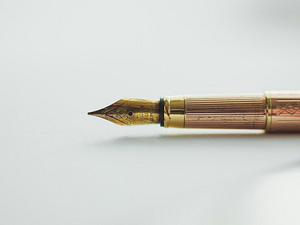Are you looking to secure your retirement savings and diversify your investment portfolio? Setting up a gold IRA might be the answer you've been searching for. In this article, we will walk you through everything you need to know about setting up a gold IRA, from the benefits and risks to the step-by-step process. By the end, you'll have a clear understanding of how to navigate the world of precious metals and make informed decisions for your financial future. So, let's dive in and explore the exciting possibilities of a gold IRA together!
Understanding Gold IRAs
A Gold IRA, also known as a Precious Metals IRA, is a type of Individual Retirement Account (IRA) that allows you to invest in physical gold, as well as other precious metals, as part of your retirement savings strategy. Unlike a traditional IRA, which typically includes stocks, bonds, and mutual funds, a Gold IRA is focused solely on precious metals.
Definition of a Gold IRA
A Gold IRA is a self-directed individual retirement account that allows you to hold physical gold or other approved precious metals as an investment within the account. The account is held by a custodian that specializes in precious metals IRA administration. Gold IRAs offer investors an alternative way to diversify their retirement portfolios and protect against the potential risks of inflation and economic uncertainty.
Difference between a Gold IRA and Traditional IRA
The main difference between a Gold IRA and a traditional IRA lies in the types of assets that can be held within the account. While a traditional IRA typically consists of stocks, bonds, and mutual funds, a Gold IRA allows you to invest in physical gold, gold coins, gold bars, gold bullion, and even proof coins. This unique feature gives you the opportunity to hedge against inflation and add diversification to your investment portfolio.
Benefits of a Gold IRA
Hedge against inflation
One of the primary benefits of a Gold IRA is its ability to serve as a hedge against inflation. Unlike paper currencies, which can be devalued by central banks and governments, gold has a long-standing history of holding its value over time. By including gold in your retirement portfolio, you can help protect your purchasing power and maintain the value of your investments in the face of inflation.
Diversification of investment portfolio
Another advantage of a Gold IRA is the opportunity for diversification. While traditional investment vehicles like stocks and bonds are subject to market volatility, gold often behaves differently. It has a low correlation with other asset classes, meaning its value may not follow the same patterns as stocks or bonds. By diversifying your portfolio with gold, you can potentially reduce overall risk and increase the stability of your investments.
Potential for high returns
In addition to its ability to hedge against inflation and diversify your portfolio, gold also has the potential for high returns. Historically, the price of gold has experienced significant increases during times of economic uncertainty and market volatility. By including gold in your retirement portfolio, you have the opportunity to benefit from potential price appreciation and potentially achieve higher returns compared to traditional investments.
Drawbacks of a Gold IRA
Can be difficult to liquidate
One drawback of a Gold IRA is that it can be more difficult to liquidate compared to traditional investments. Unlike stocks or bonds, which can be easily sold in the financial markets, physical gold requires more effort to convert into cash. You may need to find a reputable dealer or auction house to sell your gold, which can take time and may incur additional costs.
High storage costs
Another consideration when investing in a Gold IRA is the cost of storage. Physical gold needs to be securely stored to protect its value and ensure its authenticity. Whether you choose to store your gold at home or in a third-party depository, you will need to cover the costs of storage, which can vary depending on the amount and type of gold you hold.
Risk of theft
When you own physical gold, there is always a risk of theft. Storing large quantities of gold at home can make you a target for burglars, and even storing it in a depository does not eliminate all risks. It is important to take appropriate security measures and consider insurance to protect your investment from potential theft.
Types of Gold That Can Be Included
Gold coins
Gold coins are a popular choice for inclusion in a Gold IRA. They come in various weights and sizes and are typically produced by government or private mints. Some of the most commonly included gold coins in a Gold IRA include the American Eagle, the Canadian Maple Leaf, and the South African Krugerrand. These coins are recognized worldwide and have a high level of liquidity.
Gold bars
Gold bars, also known as gold ingots, are another option for your Gold IRA. They are typically produced by private refineries and come in various weights, ranging from 1 gram to 1 kilogram or more. Gold bars offer a cost-effective way to invest in larger quantities of gold, but they may have lower liquidity compared to gold coins.
Gold bullion
Gold bullion refers to any form of pure gold that is valued based on its weight and purity. This can include gold bars, gold coins, and even gold rounds. Gold bullion is highly liquid and can be easily bought and sold in the market based on the current spot price of gold.
Proof coins
Proof coins are special collector's coins that are produced in limited quantities and have a higher level of craftsmanship. They are typically struck multiple times with polished dies to create a mirrored or frosted surface. While proof coins can potentially appreciate in value over time, they may carry higher premiums compared to regular gold coins or bars.
Steps to Setting Up a Gold IRA
Select a custodian
The first step in setting up a Gold IRA is to select a custodian. A custodian is a financial institution specializing in self-directed IRAs and is responsible for administering your account and holding the physical gold on your behalf. It is important to choose a reputable and experienced custodian that is well-versed in IRS regulations and can provide secure storage options for your gold.
Create new IRA account
Once you have selected a custodian, you will need to create a new IRA account. This can usually be done online or by filling out the necessary paperwork provided by the custodian. Make sure to follow the instructions provided and provide any required documentation to open your account successfully.
Fund your account
After your new IRA account has been created, you will need to fund it. This can be done through a direct transfer from an existing retirement account or through a 401(k) rollover. You may also have the option to make a cash contribution if you have not yet reached your annual contribution limit for IRAs.
Select your gold
Once your account is funded, you can start selecting the specific gold products to include in your Gold IRA. Consult with your custodian to understand the approved list of gold products and ensure that they meet all IRS requirements for inclusion in a self-directed IRA.
Store your gold
Once you have selected your gold, you will need to decide where to store it. You have the option to store your gold at home or in a third-party depository. If you choose to store it at home, make sure to take appropriate security measures to protect your investment. If you opt for a depository, research reputable facilities that offer secure storage options and insurance coverage for your gold.
Choosing a Gold IRA Custodian
Experience and track record
When choosing a Gold IRA custodian, it is important to consider their experience and track record in the industry. Look for custodians that have been in business for a significant period and have a proven track record of successfully administering precious metals IRAs. An experienced custodian will be well-versed in IRS regulations and can provide valuable guidance throughout the process.
Storage and insurance options
Consider the storage and insurance options offered by the custodian. Ensure that they provide secure storage facilities that are protected against theft, damage, and natural disasters. Additionally, inquire about the insurance coverage provided by the custodian to protect your investment in case of unforeseen events.
Customer service
Customer service is an important factor to consider when selecting a custodian for your Gold IRA. Look for custodians that have a reputation for excellent customer service and are responsive to your inquiries and requests. A custodian that provides timely and accurate information can make the process of setting up and managing your Gold IRA much smoother.
Fees Structure
Finally, consider the fees charged by the custodian. Different custodians may have different fee structures, including setup fees, annual maintenance fees, and storage fees. Make sure to understand the fee structure and evaluate it against the services provided by the custodian. While the fees should not be the sole determining factor, they should be considered in the overall decision-making process.
Funding Your Gold IRA
Direct transfer
One way to fund your Gold IRA is through a direct transfer from an existing retirement account. This transfer can be made from a traditional IRA, Roth IRA, SEP IRA, or another qualified retirement account. The funds are directly transferred from the existing account to the new Gold IRA account, without any tax consequences or penalties.
401(k) rollover
If you have a 401(k) from a previous employer, you may have the option to rollover the funds into a Gold IRA. This rollover can be done directly, without incurring any taxes or penalties, as long as the funds are transferred directly from the 401(k) into the Gold IRA account within 60 days.
Cash contribution
If you have not yet reached your annual contribution limit for IRAs, you may also choose to make a cash contribution to fund your Gold IRA. This contribution can be made using funds from your personal savings or other eligible sources. Check with your custodian for any specific requirements or limitations regarding cash contributions.
Buying Gold for Your IRA
Understanding the spot price
Before buying gold for your Gold IRA, it is important to understand the concept of the spot price. The spot price refers to the current market price of gold at a specific point in time. It is the price at which gold is bought and sold for immediate delivery. Keep in mind that the spot price can fluctuate throughout the day, so it is important to stay informed about the current market conditions.
Choosing a dealer
When buying gold for your Gold IRA, it is crucial to choose a reputable dealer. Look for dealers that are well-established and have a good reputation in the industry. Consider factors such as their pricing, customer reviews, and any additional services they may offer, such as secure shipping or storage options.
Making the purchase
Once you have selected a dealer, you can proceed with making the purchase. The dealer will provide you with the necessary information to complete the transaction and will handle the shipping or storage arrangements. Make sure to review and confirm all the details before finalizing the purchase to ensure a smooth and secure transaction.
Storage of Gold IRA assets
Physical Storage options
When it comes to storing your Gold IRA assets, you have the option to store them physically at home or in a third-party depository. If you choose to store your gold at home, it is important to take appropriate security measures to protect your investment. This may include installing a home safe or utilizing a secure storage facility.
Depository options
Alternatively, you can choose to store your gold in a third-party depository. Depositories specialize in the secure storage of precious metals and offer a range of services, including storage, insurance, and auditing. Select a reputable depository that is known for its high security standards and has a strong track record in the industry.
Importance of Segregated Storage
When storing your gold in a depository, consider opting for segregated storage. Segregated storage means that your gold is stored separately from other customers' holdings, ensuring that your specific assets are easily identifiable and accessible. This provides an added layer of security and peace of mind, knowing that your investment is physically allocated to you.
Tips for Managing Your Gold IRA
Regular account review
It is important to regularly review your Gold IRA account to ensure that it aligns with your investment goals and risk tolerance. Review the performance of your gold holdings, monitor market trends, and consider rebalancing your portfolio if necessary. Stay informed about any changes in IRS regulations that may affect your Gold IRA and consult with your custodian or financial advisor for guidance.
Ensuring proper diversification
While gold can be a valuable addition to your portfolio, it is important to remember the importance of diversification. Avoid placing all your eggs in one basket and consider including other asset classes, such as stocks, bonds, or real estate, to further diversify your retirement portfolio. This can help mitigate risks and increase the potential for long-term growth.
Keeping up with gold market trends
Stay informed about the latest trends and developments in the gold market. Monitor the spot price of gold, pay attention to macroeconomic factors that can impact gold prices, and follow news related to supply and demand in the precious metals market. This information can help you make informed decisions about buying or selling gold and ensure that your Gold IRA remains aligned with your investment objectives.
Setting up a Gold IRA can provide you with the opportunity to diversify your retirement portfolio, hedge against inflation, and potentially achieve high returns. By understanding the definition of a Gold IRA, the difference between a Gold IRA and a traditional IRA, the benefits and drawbacks, the types of gold that can be included, the steps to setting up a Gold IRA, and the considerations for choosing a custodian, funding your account, buying gold, storing your assets, and managing your Gold IRA, you can make informed decisions and effectively navigate the process of setting up and maintaining a Gold IRA. Remember to consult with a financial advisor or tax professional to ensure that a Gold IRA is suitable for your individual financial situation and retirement goals.






